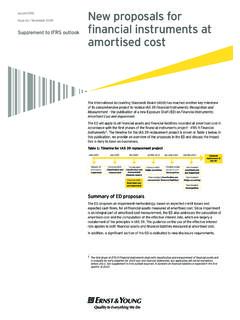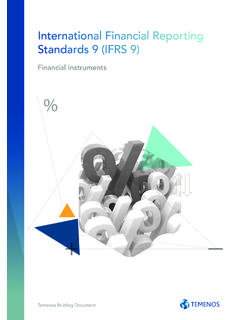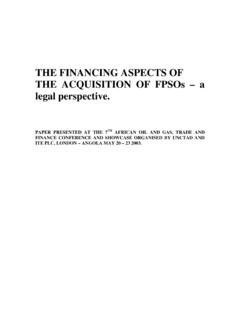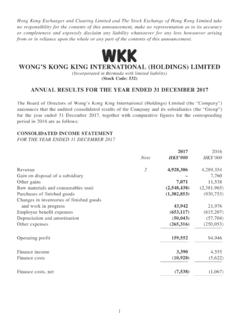Transcription of Channel-type versus coreless induction furnaces
1 A L U M I N I U M S M E LT I N G I N D U S T R Y. Channel-type versus coreless induction furnaces W. Spitz and C. Eckenbach, Marx GmbH & Co. KG. The company Marx gives an overview of technology. The paper gives technical ing of metals: the Channel-type induction fur- the different types of induction heating information comparing in detail the new nace and the coreless type induction furnace . units for melting, holding and holding/ benefits, such as an increased service life The Channel-type induction furnace con- casting furnaces . This paper focuses on of the furnace of up to three years with sists of a refractory lined furnace body made coreless inductors and on their advan- the crucible inductor.
2 Specifically, this re- of steel to which one or several Channel-type tages over channel type inductors when vamp and upgrade of a 28 tonnes holding inductors are flanged for heating the metal. it comes to holding /casting of special and casting furnace with a power of 200 Due to effects like thermal conductivity and aluminium alloys. It illustrates and ex- kW converted it to 40 tonnes and 450 buoyancy of the hot melt, in most cases the plains this comparison for the case of a kW, as demonstrated by construction and Channel-type inductor is flanged at the bottom holding/casting furnace in an aluminium field results. of the channel type furnace body. This results semi-fabrication plant in Europe which in the typical design of a small to medium- was modified from a Channel-type fur- Basically two different kinds of induction fur- sized Channel-type melting furnace like that nace to a furnace with coreless inductor naces are used for melting, holding and cast- shown in Fig.
3 1. 46 ALUMINIUM 1-2/2013. SPECIAL A L U M I N I U M S M E LT I N G I N D U S T R Y. Depending on the function of the furnace in the production line other furnace body designs may be appropriate, placing the chan- nel inductor in other positions. Channel-type induction furnaces are used for copper and copper alloy melting, as the copper is sensitive to oxygen pick-up from the air at a turbulent surface. Channel-type furnaces offer a smooth bath surface, but still provide a sufficient tur- bulence inside the melt to mix it and ensure uniform chemical composition and tempera- ture. These are also the preferred type of furnace for holding and casting of copper and copper alloys (Fig.)
4 2). Another application for the channel induc- tor is the holding of iron melts in huge stor- age furnaces or holding / casting furnaces with Marx flanged forehearth, these being used in auto- matic high-speed sand mould casting lines. Fig. 1: Different types of induction furnaces Channel-type furnace Channel-type furnaces have a much higher electrical efficiency than coreless furnaces , but when it comes to iron and steel melting (high power density required) and frequent alloy change, or the need to empty the fur- nace regularly, the coreless furnace is the pre- ferred choice as melting for holding / casting furnaces . A third version of induction heating is a so called coreless inductor'.
5 coreless induc- tors were already being used at the beginning of the 1980s for heating holding furnaces in the aluminium and copper casting industries, typically for holding furnaces in continuous casting lines. Such inductors consume more energy than a Channel-type inductor, but they offer much longer lifetime and they allow easy emptying the holding furnace on a regular ba- sis (Fig. 3). Marx has gained an extensive experience in modifying existing holding furnaces from Fig. 2: channel inductor Aluminium being heated by Channel-type inductors to being heated by coreless inductors. Such a refurbishment and modification can increase holding capacity, precision and power ef- ficiency.
6 Changing the old conventional tap switch power cabinet for a more economical IGBT transistor converter cabinet also allows a precise holding / casting temperature regula- tion of the melt. Such a furnace refurbishment will be illus . trated and explained using the example of a 28-tonne holding furnace at a prominent semi- fabricator plant in the European aluminium slab casting industry. This customer has been operating eleven units with 20- to 30-tonne holding furnaces , these being fed with liquid metal by gas heated melting furnaces , which supply the liquid metal by tilting into a semi- continuous vertical casting line (Fig. 4). Holding /casting furnace coreless (crucible) inductor The holding furnaces had been equipped Fig.
7 3: Different types of induction furnaces furnace heated by coreless inductor ALUMINIUM 1-2/2013 47. A L U M I N I U M S M E LT I N G I N D U S T R Y. 3D-Visualisation Fig. 4: channel inductor, 28-tonne capacity Crucible inductor, 40-tonne capacity with 200 kW Channel-type inductors, but these be enlarged. For this purpose, we must subject required weekly cleaning due to clogging of the unit needs to static and dynamic functional Fig. 7: 40-tonne holding and casting furnace , ready for production the channels. Cleaning represents in significant testing and check the complete movement (tilt- production downtimes as well as difficult and ing, driving) devices and power input.
8 Calcula- time-consuming maintenance. In addition, the tions have to prove whether these components tor that is installed later on. After successful furnaces needed five to six inductor changes must be replaced by more powerful ones. welding and structural support, the furnace is per year at one holding furnace , resulting in On the construction site itself, the discon- ready to undergo welding analysis and, after additional maintenance costs and production nection of the old lower furnace body struc- approval, needs to be prepared for a new lining. downtimes. ture is prepared and carried out. The welding Constructional conditions, such as the furnace Converting an existing furnace involves area is being mechanically and technically pre- pit, are also checked in terms of spatial geom- first collecting the furnace 's structural data.
9 It pared and the new substructure is positioned etry. The necessary clearance spaces for more is useful and recommendable to visualise this on the contact surface and then welded onto expansive tilting movements may require structure in a 3D image. Then we must decide the furnace (Figs 5 and 6). structural changes; this however is normally whether the furnace volume will remain un- The new furnace substructure supports not the case (Fig. 7). changed or whether the furnace casing should the receiving structure for the crucible induc- In terms of cost saving and production in- crease, such conversion is amortised in less than one year. For operating personnel, han- dling becomes much easier.
10 So far, Gautschi has retrofitted or has prepared for retrofitting some 30 such furnace plants. It is nearly al- ways possible to use the existing furnace ves- For 50 years, the Marx group in Germany with its approximately 100 employees has been working in the furnace industry. The company's activities include planning and Fig. 5: Separation of existing substructure manufacturing of induction furnace plants, engineering, development, remanufacture, modernisation and retrofitting of induction furnace plants, service and customer support. The company has therefore gained extensive experience in working on almost all types of induction furnaces . Nearly every type of fur- nace has been serviced, repaired, retrofitted or modernised in its facilities.







